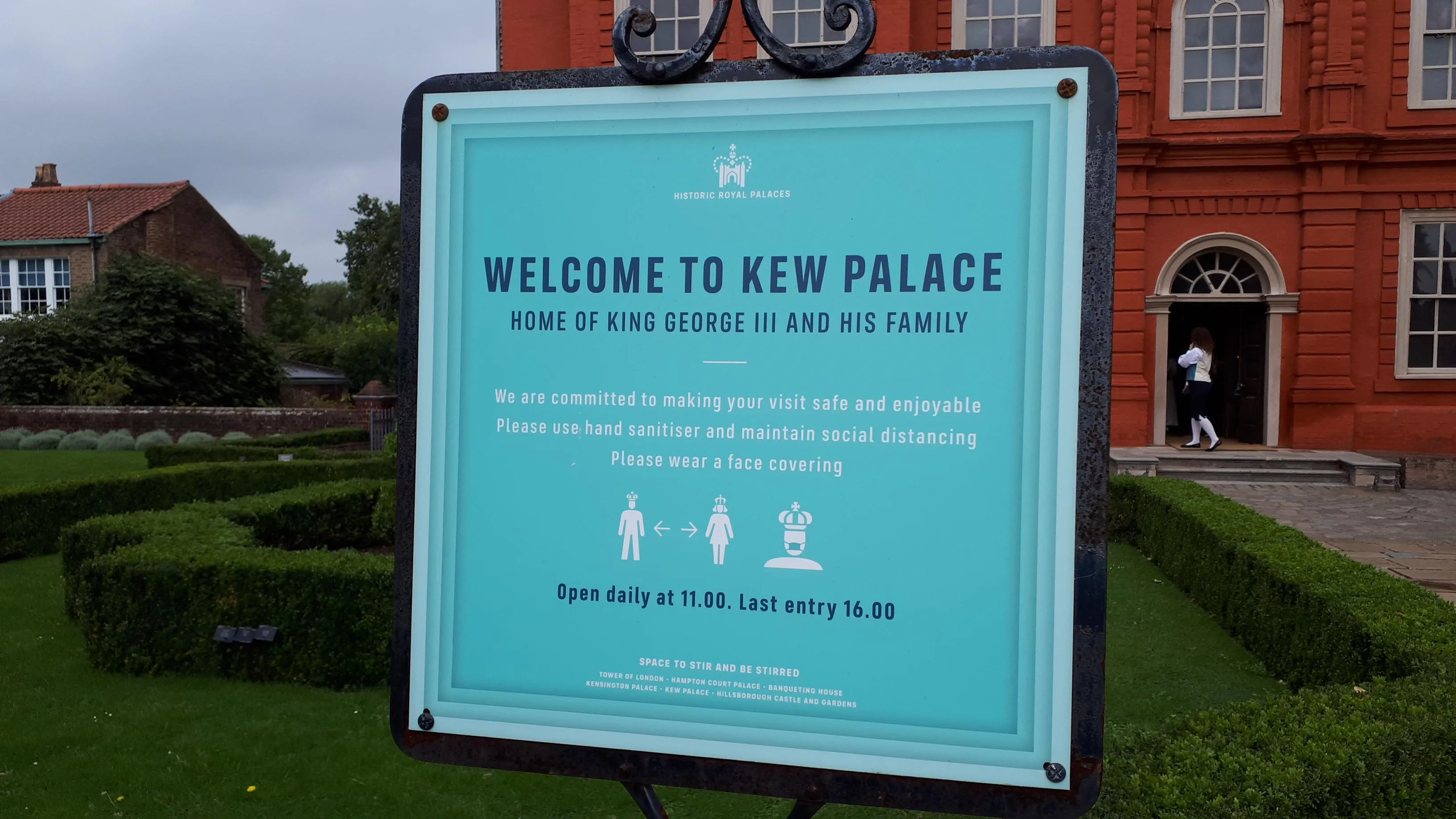Implementing Covid-19 measures: A pragmatic study of non-official public signs
This project examines how Covid-19 signage displayed in London businesses throughout the pandemic reproduces and adapts government instructions.
It makes an original contribution to research on risk communication by adopting a bottom-up approach and scrutinising the implementation of containment measures in specific local contexts.
A pragmatic analysis of directive signs regulating behaviour reveals the linguistic choices preferred by those implementing the measures on their premises and interprets them in relation to the official texts they reproduce. The analysis is supported by interviews with business owners, providing insights into the motivations behind specific linguistic choices and practices surrounding the signs.

Photo taken by Dr Eva Ogiermann.
Aims
Successful containment of a pandemic requires not only introducing the right measures at the right time but also communicating them clearly to the public. Previous research on risk communication has mainly relied on surveys, a method that studies beliefs about and attitudes towards risk communication and adopts the top-down perspective of health officials and policy makers.
This project takes a novel, bottom-up approach to the study of risk communication by examining non-official Covid-19 signs and interpreting them in relation to the texts they reproduce. Its main focus is on a pragmatic analysis of ca. 3,000 directive signs designed to regulate behaviour (such as “No mask - No entry”), displayed on the premises of London’s shops and hospitality venues, and photographed throughout the pandemic.
Methods
Initial insights gained during data collection show that the signs display a high level of directness. Yet, unlike official instructions, the non-official Covid-19 signs tend to soften the demands made on the customers through informality and humour, reflecting the need for customer retention.
To establish how the formulations chosen by the business owners have been adapted to suit local contexts, the signs will be compared to official communications issued between March 2020 and July 2021, including legislation published on www.gov.uk, speeches delivered by the Prime Minister, and official Covid-19 signage.
Interviews with business owners, on the other hand, will provide a better understanding of their motivations for choosing particular formulations and their experiences with handling the signs. Ultimately, they will shed some light not only on the practical side of the implementation of policy measures but also on the effectiveness of the approach taken by the British government both in developing interventions and communicating them to the public.
Principal Investigator
Affiliations
Funding
Funding Body: Leverhulme Trust
Amount: £44,459
Period: September 2022 - June 2023

